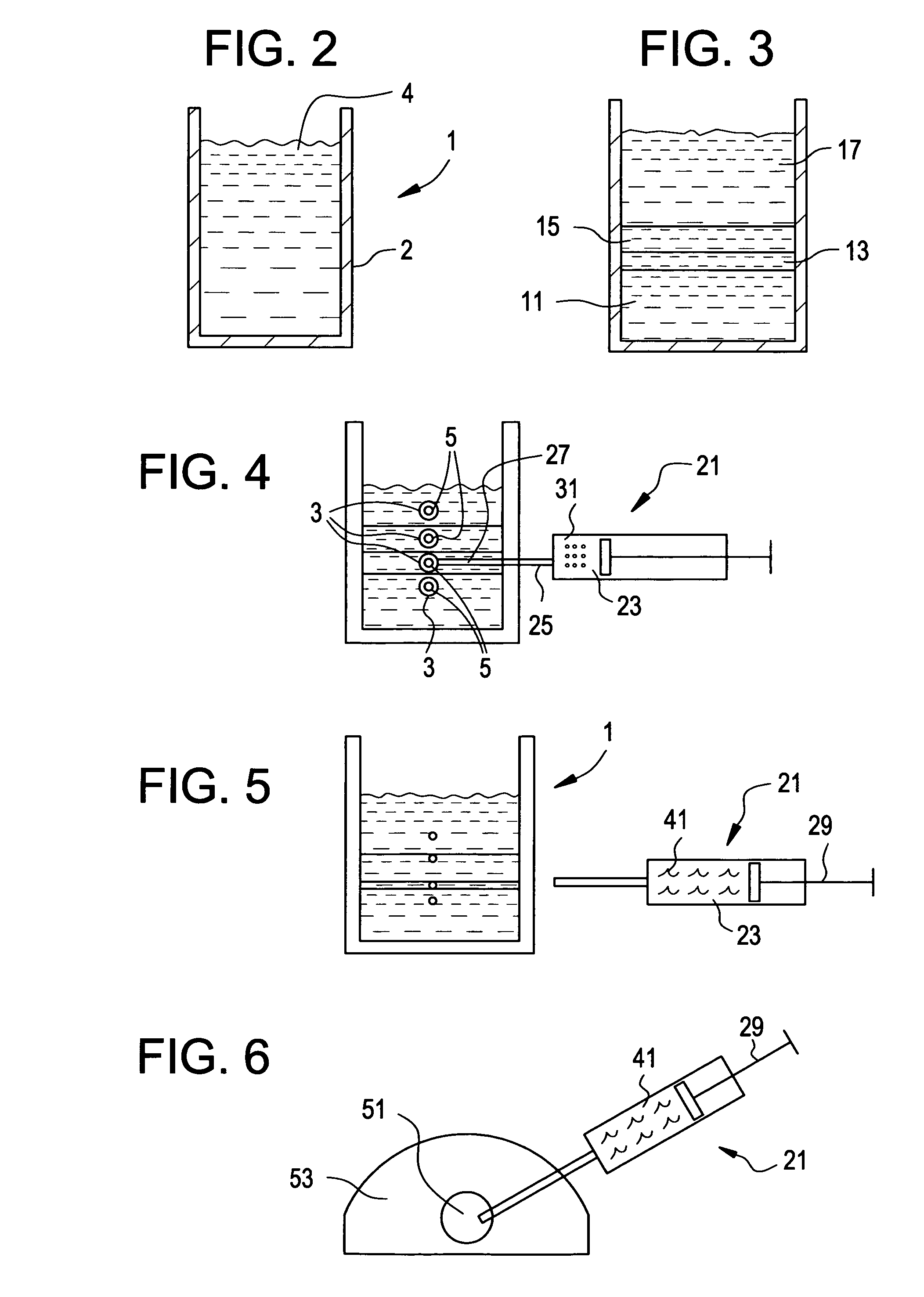Intradiscal injection of autologous interferon
a technology of autologous interferon and intradiscal injection, which is applied in the direction of drug compositions, peptide/protein ingredients, metabolic disorders, etc., can solve the problems of high toxicity of cytokines and mmps, retarding the flow of nutrients into the disc, and accumulating high levels of toxins
- Summary
- Abstract
- Description
- Claims
- Application Information
AI Technical Summary
Benefits of technology
Problems solved by technology
Method used
Image
Examples
example i
[0082]This prophetic example describes a typical method of the present invention.
[0083]First, about 20 cc of blood is taken from the patient. Now referring to FIG. 2, the blood 4 is placed in a centrifugation container 1 adapted for centrifugation and having a side wall 2.
[0084]Now referring to FIG. 3, the blood is centrifuged to produce centrigued blood fractions including red blood cells 11, platelets 13, buffy coat 15 and platelet poor plasma 17.
[0085]Now referring to FIG. 4, a syringe 21 having a barrel 23 containing a poly I:C powder 31 and a needle 25 is provided. The centrifugation container has a plurality of side ports 3 having puncturable gaskets 5 therein. The clinician inserts the distal end 27 of the needle through the lowest gasket in the buffy coat portion of the fractionated blood.
[0086]Now referring to FIG. 5, the clinician pulls back upon the plunger 29. The vacuum created by withdrawl of the plunger causes the buffy coat fluid to enter barrel 23 of syringe 21, the...
PUM
| Property | Measurement | Unit |
|---|---|---|
| concentration | aaaaa | aaaaa |
| concentration | aaaaa | aaaaa |
| energy | aaaaa | aaaaa |
Abstract
Description
Claims
Application Information
 Login to View More
Login to View More - R&D
- Intellectual Property
- Life Sciences
- Materials
- Tech Scout
- Unparalleled Data Quality
- Higher Quality Content
- 60% Fewer Hallucinations
Browse by: Latest US Patents, China's latest patents, Technical Efficacy Thesaurus, Application Domain, Technology Topic, Popular Technical Reports.
© 2025 PatSnap. All rights reserved.Legal|Privacy policy|Modern Slavery Act Transparency Statement|Sitemap|About US| Contact US: help@patsnap.com



